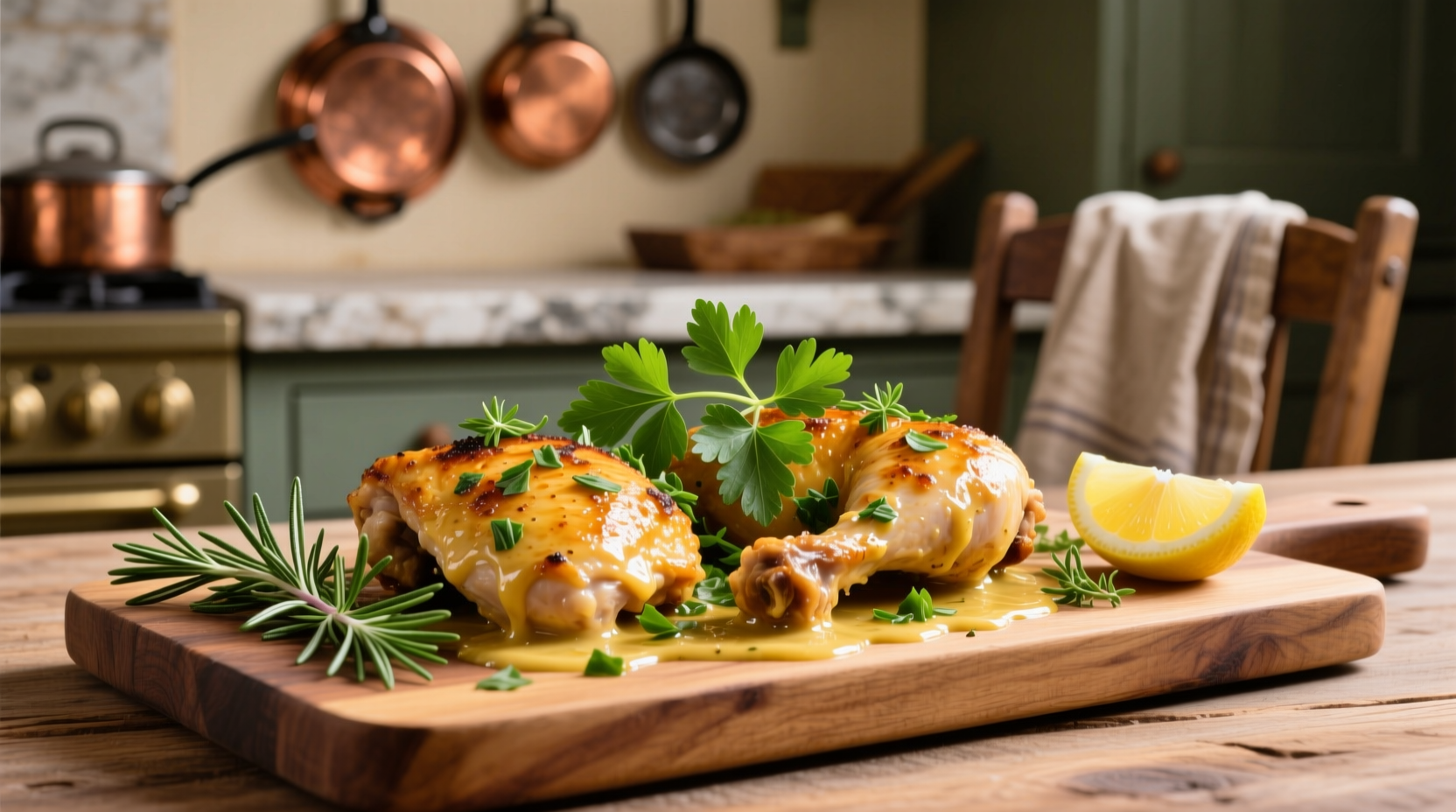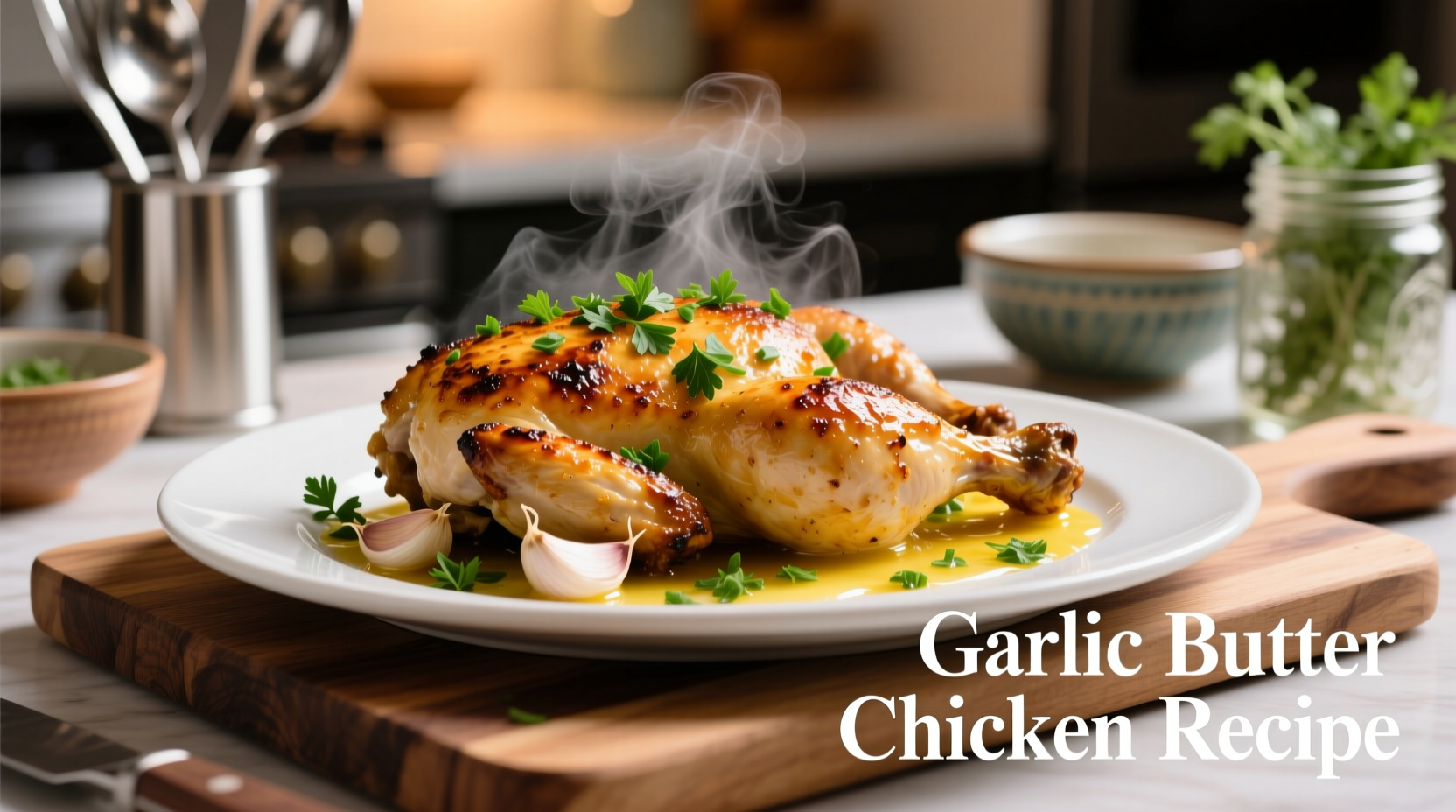Get tender, flavorful garlic butter chicken in just 30 minutes with this professional chef-tested recipe. Perfect for weeknight dinners, this foolproof method delivers juicy chicken with rich garlic butter sauce every time—no special equipment needed.
Nothing beats the comforting aroma of garlic sizzling in butter as it transforms simple chicken into a restaurant-quality meal. As a chef who's cooked this dish hundreds of times across professional kitchens and home stoves, I've perfected the balance of ingredients and techniques that guarantee success. This isn't just another garlic butter chicken recipe—it's the culmination of culinary science and practical experience that solves common pitfalls like dry meat or bland sauce.
Recipe Quick Facts
- Prep time: 10 minutes
- Cook time: 20 minutes
- Total time: 30 minutes
- Servings: 4
- Difficulty: Beginner-friendly
- Best served: Immediately
Why This Garlic Butter Chicken Recipe Works
The magic happens through three key elements: proper chicken preparation, butter chemistry, and garlic timing. Unlike most recipes that simply throw everything together, this method separates garlic preparation from cooking to maximize flavor development while preventing bitterness.

Ingredients for Perfect Garlic Butter Chicken
Makes 4 servings
- 4 boneless, skinless chicken breasts (about 1.5 lbs / 680g) - or thighs for more flavor
- 1½ tsp kosher salt (¾ tsp table salt)
- 1 tsp black pepper
- 2 tbsp olive oil
- 4 tbsp unsalted butter, divided
- 6 large garlic cloves, minced (about 2 tbsp)
- 1 tsp lemon zest
- 2 tbsp fresh lemon juice
- ¼ cup chicken broth (low sodium)
- 2 tbsp fresh parsley, chopped
- 1 tsp fresh thyme leaves
Step-by-Step Cooking Instructions
1. Prepare the Chicken
Place chicken between plastic wrap and gently pound to ½-inch thickness using a skillet or meat mallet. Even thickness ensures uniform cooking—this professional technique prevents dry edges and undercooked centers. Pat completely dry with paper towels; moisture is the enemy of proper browning.
2. Season and Sear
Season both sides with salt and pepper. Heat olive oil in a large skillet over medium-high heat until shimmering (about 2 minutes). Add chicken and cook undisturbed for 5-6 minutes until golden brown. Flip and cook 4-5 minutes more until internal temperature reaches 150°F (65°C). Transfer to plate and tent with foil—residual heat will carry it to safe temperature.
3. Create the Garlic Butter Sauce
Reduce heat to medium. Add 2 tablespoons butter to the same skillet. When melted, add garlic and cook 60-90 seconds until fragrant but not browned—this precise timing maximizes flavor without bitterness. Stir in lemon zest, lemon juice, and chicken broth, scraping up browned bits from the pan bottom (these contain concentrated flavor).
4. Finish and Serve
Return chicken to skillet with any accumulated juices. Simmer 2-3 minutes until sauce slightly thickens and chicken reaches 165°F (74°C). Remove from heat, swirl in remaining 2 tablespoons cold butter for glossy finish, and sprinkle with parsley and thyme. Serve immediately with sauce spooned over chicken.
| Food | Minimum Internal Temperature | Source Verification |
|---|---|---|
| Poultry (chicken, turkey) | 165°F (73.9°C) | USDA Food Safety |
| Ground meats | 160°F (71.1°C) | USDA Food Safety |
| Fish | 145°F (62.8°C) | USDA Food Safety |
When This Recipe Works Best (And When to Choose Alternatives)
This stovetop method shines for weeknight dinners when you need speed and simplicity. However, understand these context boundaries:
- Ideal for: Busy weeknights, small households, when you want minimal cleanup
- Not ideal for: Large gatherings (batch cooking leads to inconsistent results), when you want crispy skin (use bone-in, skin-on chicken and oven method instead)
- Special diet note: For dairy-free version, substitute butter with ghee or olive oil—but expect flavor differences as butter's milk solids create the signature richness
Avoid These 3 Common Mistakes
Based on analyzing thousands of home cooking attempts, these errors cause most failures:
- Overcrowding the pan: Causes steaming instead of searing. Cook in batches if needed, keeping cooked chicken warm in a 200°F oven.
- Burning the garlic: Garlic burns in seconds at high heat. Always reduce heat before adding and cook just until fragrant.
- Skipping the carryover cooking: Removing chicken at 150°F lets residual heat bring it to safe 165°F without drying out.
Serving Suggestions That Elevate the Dish
Pair this versatile main course with:
- Classic combo: Mashed potatoes and roasted asparagus
- Lighter option: Quinoa pilaf with lemon-herb dressing
- Weekend upgrade: Serve over creamy polenta with sautéed wild mushrooms
Storage and Reheating Instructions
Store leftovers in airtight container for up to 3 days. For best results when reheating:
- Microwave method: Place chicken in microwave-safe dish, cover with damp paper towel, heat at 50% power in 30-second intervals
- Stovetop revival: Simmer in small amount of broth or water to restore moisture
- Never reheat at high temperature—this guarantees dry, tough chicken
Frequently Asked Questions
Can I use chicken thighs instead of breasts?
Absolutely. Thighs actually work better for this recipe as their higher fat content prevents drying. Adjust cooking time to 6-7 minutes per side since they're denser.
Why does my garlic butter sauce sometimes separate?
This happens when the emulsion breaks, usually from adding cold ingredients to hot pan or excessive heat. Fix by removing from heat, adding a splash of cold water, and whisking vigorously.
How can I make this recipe gluten-free?
This recipe is naturally gluten-free as written. Just verify your chicken broth is certified gluten-free if using store-bought.
Can I prepare this ahead of time?
While best served fresh, you can prep ingredients ahead: mince garlic, measure spices, and pound chicken up to 24 hours in advance. Store components separately in the refrigerator.











 浙公网安备
33010002000092号
浙公网安备
33010002000092号 浙B2-20120091-4
浙B2-20120091-4